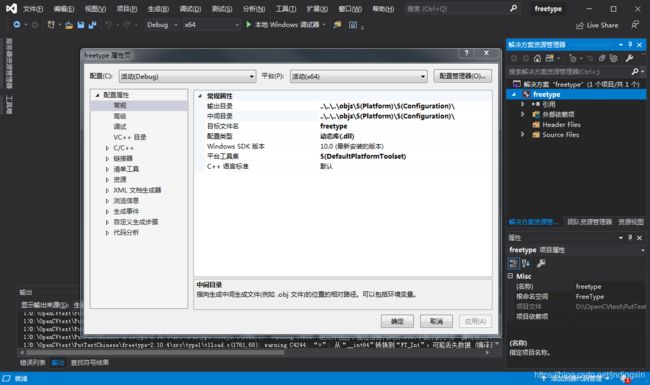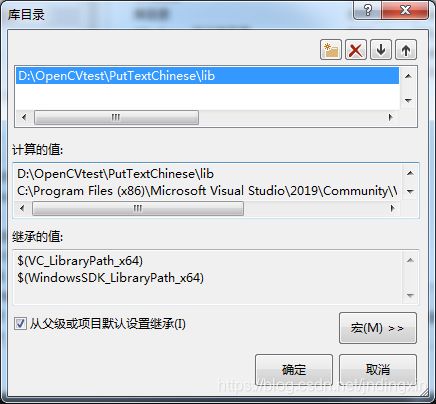OpenCV文字绘制支持中文显示
OPenCV版本:4.4
IDE:VS2019
功能描述
OpenCV绘制文本的函数putText()不支持中文的显示,网上很多方法推荐的都是使用FreeType来支持,FreeType是什么呢?FreeType的官网上有介绍
FreeType官网
https://www.freetype.org/index.html
网站上都是英文的介绍,闲着没事,翻译了一下其介绍,水平有限,凑活着看,如下:
FreeType是一款免费的用来渲染字体的软件库。
他是用c语言编写的,体量小,效率高,可高度定制,同时能够产生大多数矢量和位图字体格式的高质量输出(字形图像)。
选择一个版本进行下载,其下载地址如下:
https://sourceforge.net/projects/freetype/files/freetype2/2.10.1/freetype-2.10.1.tar.xz/download
解压后如下图所示:
配置FreeType
FreeType文件夹里自带了vs的工程,在freetype-2.10.4\builds\windows\vc2010\目录下,直接用vs2019打开freetype.sln,就可以编译,选择x64编译,编译成功后在freetype-2.10.4\objs\x64\Debug文件夹下面,生成freetype.dll和freetype.lib,如下图:
新建一个工程,工程中配置相关的库路径和包含路径,如下图所示添加库的过程。
点击下拉列表,如下图所示:
把freetype.lib添加进去,点击确定后完成。
单击下拉列表,如下图:
添加上库的路径,单击确定,完成。
添加包含头文件的目录。如下图:
单击下拉列表,打开添加包含路径的窗口,如下图:
添加路径后,单击确定,成功。
添加FreeType的封装类文件
CvxText.h
#ifndef OPENCV_CVX_TEXT_HPP_
#define OPENCV_CVX_TEXT_HPP_
// 支持OpenCV中文汉字输入
#include CvxText.cpp
#include 源码
#include 








